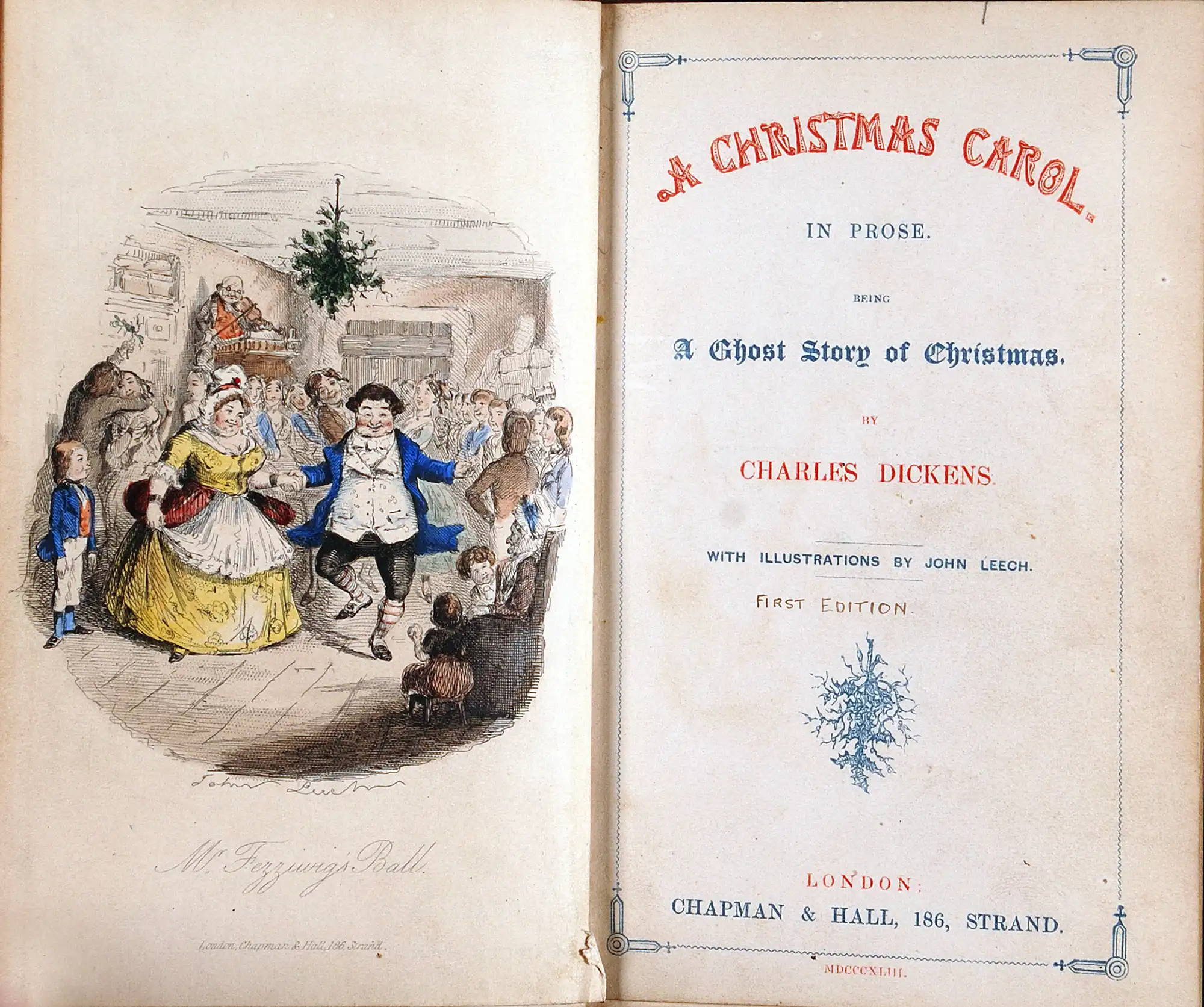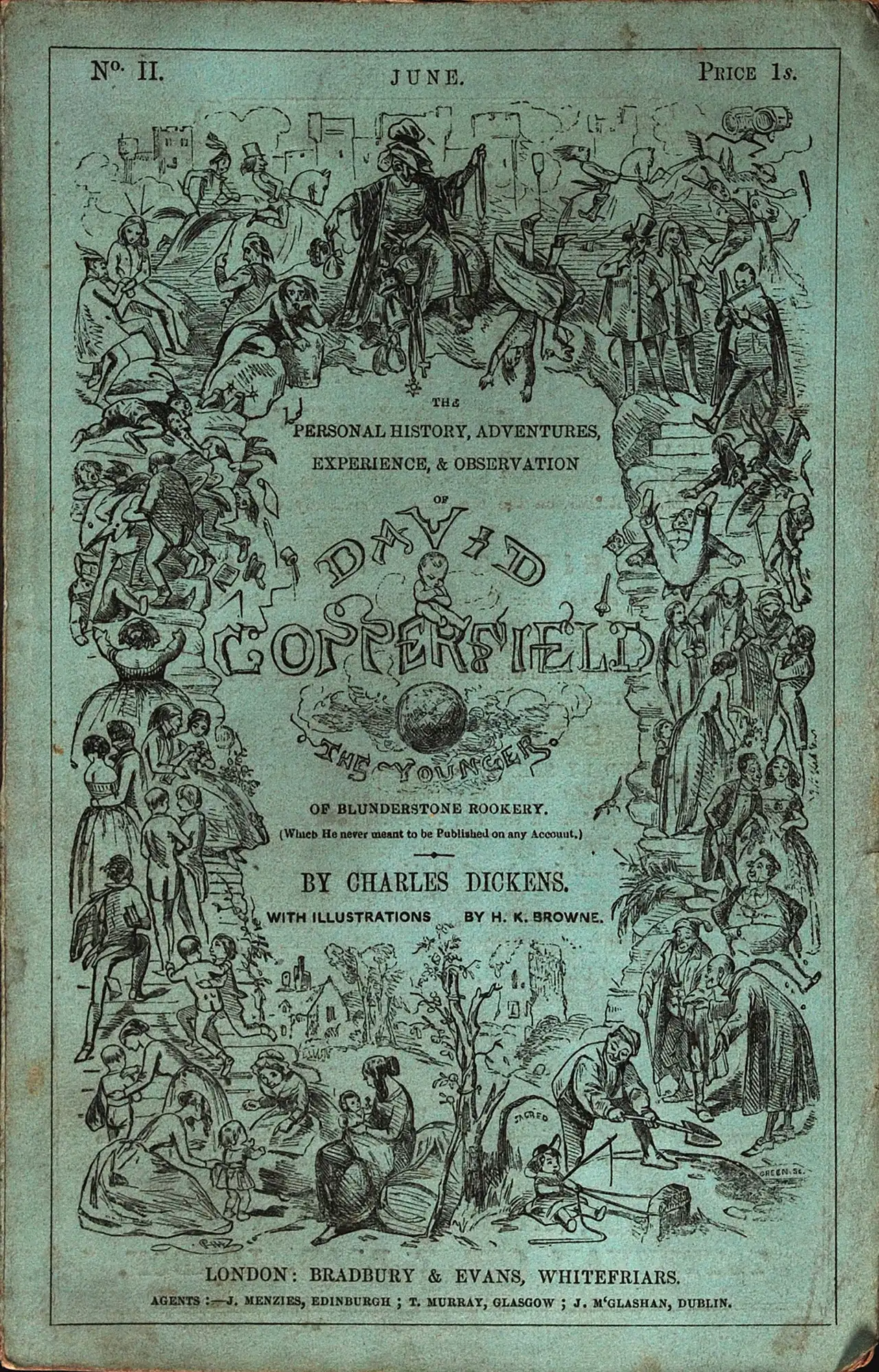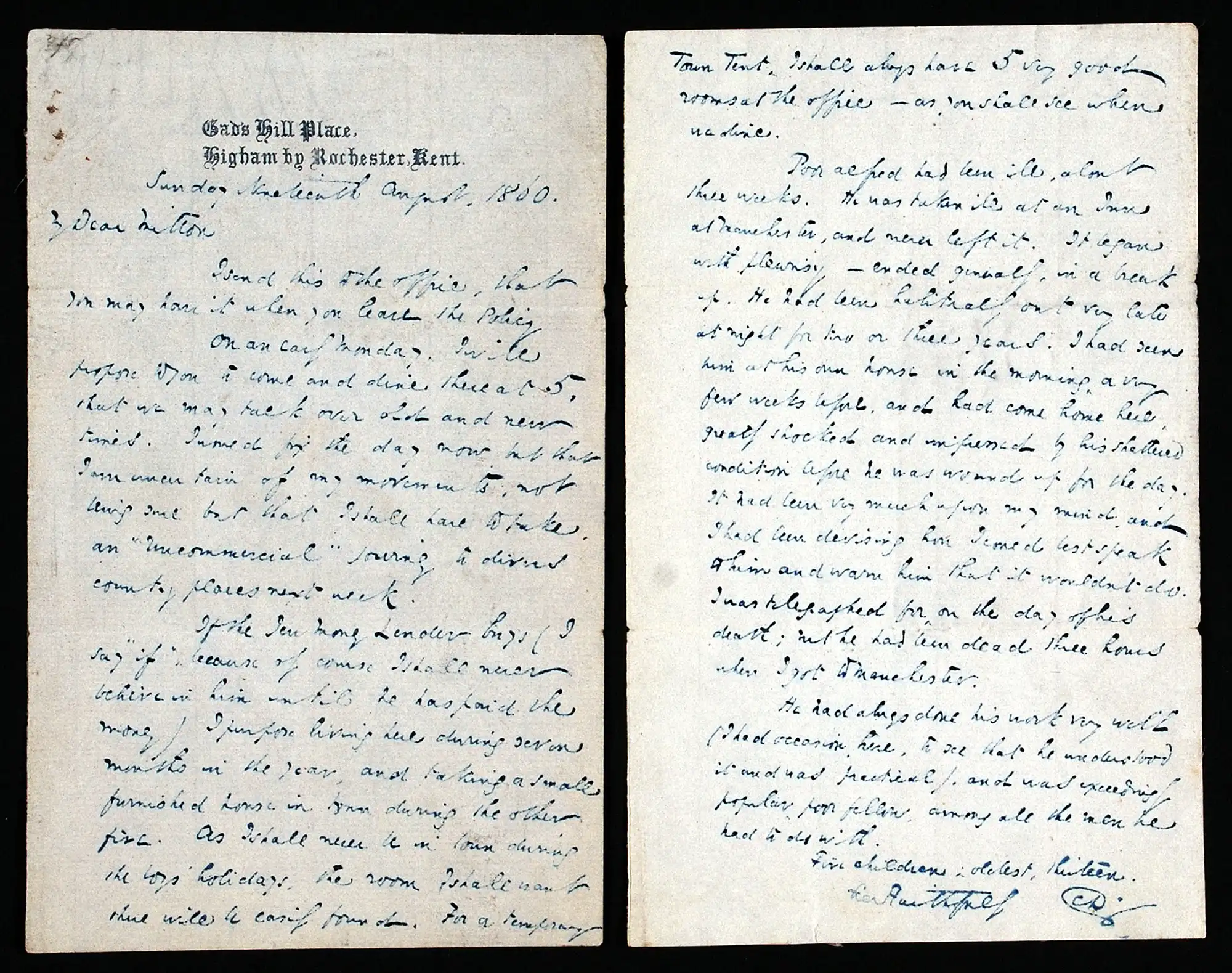Case 14
- Charles Dickens 2

Charles Dickens. Master Humphrey's clock. London: Chapman and Hall, 1840-41. 88 volumes; Vol. 44 displayed.
The short-lived periodical Master Humphrey’s clock contained Dickens’s fourth and fifth novels, The old curiosity shop and Barnaby Rudge. Displayed here is Volume 44, in which the contemporary reader learnt of the death of the Old curiosity shop’s central character Nell Trent. The excitement surrounding the melancholy conclusion to the series was at the time considered unprecedented.

Charles Dickens. Master Humphrey's clock. London: Chapman and Hall, 1840-41. 88 volumes; Vol. 44 displayed.
Open image in new window

Charles Dickens. A Christmas carol in prose: being a ghost story of Christmas. 1st ed. London: Chapman & Hall, 1843.
Dickens wrote five Christmas books between 1843 and 1848. They achieved a wide popularity, and A Christmas carol, the first and greatest of them still remains a Christmas institution. In the preface to the first collected edition Dickens wrote: “My purpose was a whimsical kind of masque, in which the good humour of the season justified, to awaken some loving and forbearing thoughts, never out of season in a Christian land”.
Dickens wanted A Christmas carol to be a beautiful gift book and he made detailed stipulations regarding the ornamentation of the binding, the use of coloured inks on the title page, and the colouring of the illustrations and the endpapers. Of the eight illustrations provided by John Leech, four were coloured by hand. This was very expensive, and Dickens never again used colour in any of his books. The book was released on 19 December 1843. By Christmas Eve, 6,000 copies had sold and by May 1844 the books had gone through eight editions. This is the third edition.

Charles Dickens. A Christmas carol in prose: being a ghost story of Christmas. 1st ed. London: Chapman & Hall, 1843.
Open image in new window

Charles Dickens. The personal history, adventures, experience, & observation of David Copperfield. London: Bradbury & Evans, 1849-50. 20 volumes in 19; Vol. 1 displayed.
Reed’s original gift of 1948 included a collection of approximately fifty monographs relating to Charles Dickens, and a complete set of the periodical The Dickensian, from 1905 to 1947. The monographs included biographies, works of literary criticism, and a first edition of the novel Little Dorrit.
In addition, Reed donated his extra-illustrated edition of Forster’s Life of Charles Dickens, numerous letters written by Dickens and persons of his circle and several ‘association’ books from Dickens’ library.
Reed perused Dickens from childhood and considered the English novelist his literary hero. After 1948, he continued to donate precious items of Dickensiana and would later claim that his Dickens collection was probably the most comprehensive of its kind in the Southern Hemisphere.
The Reed Dickens Collection today numbers more than 2,200 volumes and includes a significant number of first editions.
David Copperfield was first published in the usual successful twenty-in-nineteen monthly parts, from May 1849 to November 1850. A partially autobiographical bildungsroman, it is considered by some critics to be Dickens’s best novel.

Charles Dickens. The personal history, adventures, experience, & observation of David Copperfield. London: Bradbury & Evans, 1849-50. 20 volumes in 19; Vol. 1 displayed.
Open image in new window

Letter, Charles Dickens, Gads Hill Place, Higham, Kent, to Tom Mitton, 19 April 1860.
A.H. Reed’s fascination with Dickens stemmed partly from his identification with Dickens’ message of social conscience and partly because he saw parallels between Dickens’ own life and his own. Both Dickens and Reed had pulled themselves out of penury by learning shorthand and obtaining clerical jobs.
There was however a closer family connection. Tom Mitton (1812-1878) was a lifelong friend of Dickens. Mitton’s younger sister, Mary Ann was the model for the character of Little Dorrit. Years later Mary Ann Mitton married William Cooper, who was Reed’s great-uncle. Cooper used Dickens’ own carriage to drive himself to his wedding.
This letter from Dickens to Tom Mitton was written at Dickens’ last residence, Gad’s Hill, in 1860. It refers to the death of Dicken’s younger brother Alfred (1822-1860) who died at the age of 38. The letter was donated by Reed to the Library in 1966.

Charles Dickens. Le magasin d'antiquites. Paris: Libraire de L. Hachette et Cie., 1857. Two volumes; Vol. 1 displayed.
The Reed Collection contains four books from the library of Charles Dickens at Gads Hill Place at Higham, Kent, including this French translation of The old curiosity shop published in Paris in 1857. Affixed to the front pastedown are the bookplate and book label of Charles Dickens, alongside the later bookplate of Dickensiana collector Comte Alain de Suzannet (1882-1950).

Charles Dickens. Le magasin d'antiquites. Paris: Libraire de L. Hachette et Cie., 1857. Two volumes; Vol. 1 displayed.
Open image in new window




